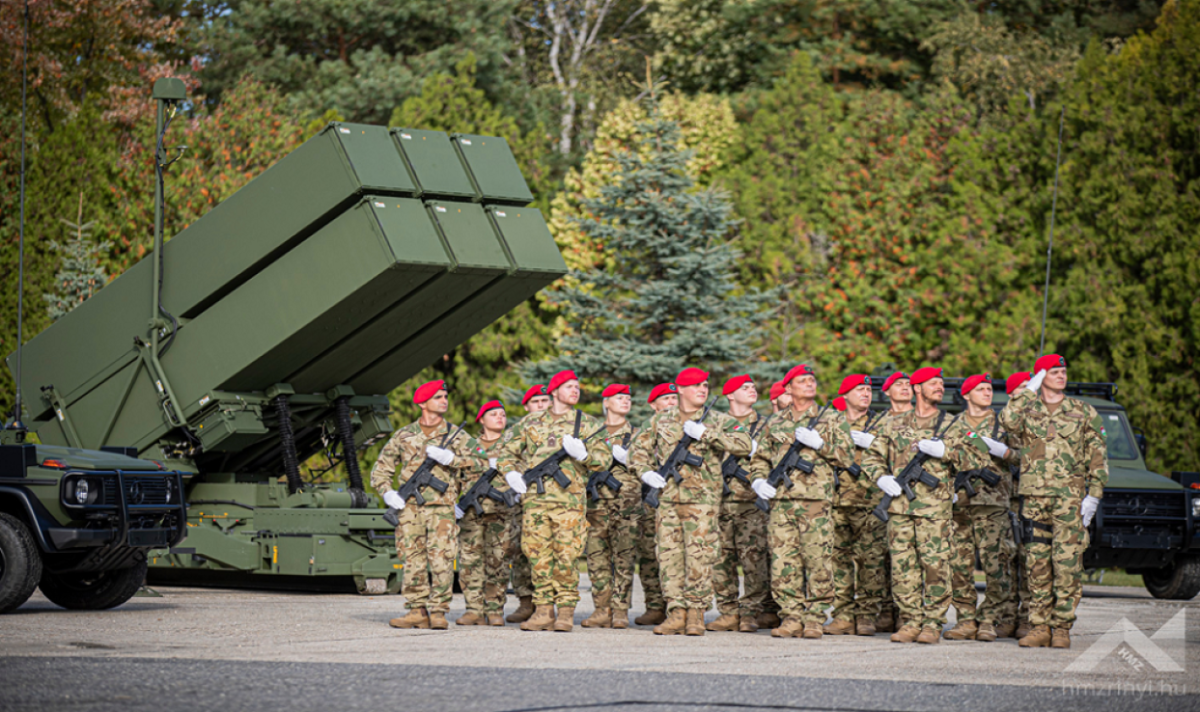Strengthening the Shield: Q4-2024 Air Defense Updates in Central Europe
Enhancements in Central Europe's air defense in Q4 2024 include the European Sky Shield Initiative, Hungary's Zrínyi 2026 upgrades, Germany's Patriot systems, Slovakia's Barak MX acquisition, and Norway's deployment to Poland, strengthening regional security against modern aerial threats.
Central Europe is stepping up its air defense efforts to address emerging security challenges. This blog highlights key developments from Q4 2024, focusing on collaborative initiatives and national programs that are strengthening regional security
The European Sky Shield Initiative (ESSI): A Collaborative Approach
One of the most notable developments in Q4 2024 is the progress of the European Sky Shield Initiative (ESSI). Spearheaded by 18 EU member states, this initiative seeks to integrate and enhance Europe’s air and missile defense systems.
By fostering collaboration across borders, ESSI aims to provide a unified shield against aerial threats, including drones, ballistic missiles, and cruise missiles. Key systems include:
- IRIS-T SLM – Medium-range precision interceptor.
- Patriot PAC-3 MSE – Defense against ballistic and cruise missiles.
- Arrow 3 – High-altitude ballistic missile interceptor.
- NASAMS – Modular system for aerial threats.
- SkySabre – British system for fast-moving targets.
- C-UAS – Counter-drone technologies.
- Integrated Platforms – NATO's ACCS and German TLVS.
This multinational effort underscores the urgency of addressing modern air defense challenges, particularly in light of increasing geopolitical tensions. ESSI's implementation highlights a commitment to collective security, ensuring that Central Europe remains prepared for emerging threats in the air domain.
In Q4 2024, the European Sky Shield Initiative (ESSI) achieved key milestones:
- Switzerland's Membership: On October 17, 2024, Switzerland joined ESSI as its 15th member, enabling collaboration on air defense procurement, training, and logistics within its neutrality framework.
- Joint Defense Projects: In November 2024, European nations committed to co-develop missile defense systems, electronic warfare, and other military assets to strengthen collective security.

Hungary's Zrínyi 2026 Program: Transforming National Defense
Hungary continues to make significant investments in its military modernization through the Zrínyi 2026 Program. With an ambitious budget of approximately €13 billion, this initiative represents Hungary’s largest defense overhaul since the Cold War. By the end of 2024, Hungary has prioritized upgrading its air defense systems as part of this comprehensive transformation.
Key upgrades include the acquisition of advanced radar systems, surface-to-air missile platforms, and integration with NATO’s air defense network. These enhancements not only bolster Hungary’s national defense but also contribute to the broader security architecture of Central Europe.
In Q4 2024, Hungary's Zrínyi 2026 Program made key advancements in air defense:
- Deployment Near Ukraine: Advanced air defense systems were installed in the northeast near the Ukrainian border, enhancing security amid regional tensions.
- ELM-2084 Radars: Hungary acquired 11 multi-mission radars to boost aerial surveillance and threat detection.
- NASAMS Integration: Progress continued in deploying NASAMS to replace Soviet-era equipment, improving medium-range defense and NATO alignment.
- Skyranger 30: Development of the mobile short-range air defense system mounted on Lynx vehicles aims to counter drones, operational by 2025-2026.

Germany's Air Defense Upgrades: Strengthening Missile Defense
In December 2024, Germany approved the procurement of additional Patriot PAC-3+ systems and MIM-104 Patriot missiles. This decision reflects Germany’s commitment to strengthening its air defense capabilities amidst rising concerns over aerial threats.
The Patriot system, renowned for its reliability and precision, provides Germany with enhanced protection against ballistic missiles, aircraft, and drones. By expanding its inventory, Germany reinforces its position as a key player in European air defense and contributes significantly to the region’s collective security efforts.
In Q4 2024, Germany advanced its air defense capabilities with one key development:
- Parliamentary Approval: In December 2024, Germany approved the purchase of 248 MIM-104 Patriot PAC-3 MSE missiles, boosting defenses against ballistic missiles, aircraft, and drones.
Earlier, in Q2 2024, the following air defense updates were confirmed in the German nexus:
- U.S. Clearance: In August 2024, the U.S. cleared a potential $5 billion sale of up to 600 PAC-3 MSE missiles to Germany for enhanced air defense.
- NATO Collaboration: In July 2024, NATO contracted Raytheon for $478 million to supply Patriot GEM-T missiles, strengthening Germany's missile defense systems.

Slovakia's Acquisition of Barak MX Systems: Enhancing Medium-Range Defense
Earlier this year, in August 2024, Slovakia finalized a $610 million contract to procure six Barak MX air defense systems from Israel. Designed to address medium-range threats, the Barak MX system offers cutting-edge technology capable of intercepting a wide range of aerial targets.
This acquisition marks a further step in Slovakia’s efforts to modernize its military and align its capabilities with NATO standards. The new systems are expected to be operational by 2025, further solidifying Slovakia’s role in Central Europe’s air defense framework.
Slovakia has furthermore improved defense partnership with Poland, as outlined in our recent article on Polish-Slovakian East Shield initiative:

Norway's Deployment to Poland: Securing Key Logistics Hubs
In early December 2024, Norway deployed further F-35 fighter jets and NASAMS air defense systems to Rzeszow, Poland. This deployment is strategically significant, as Rzeszow serves as a critical logistics hub for coordinating military aid to Ukraine.
The presence of Norwegian assets in Poland enhances the security of this vital corridor and demonstrates NATO’s commitment to safeguarding its eastern flank. This move also highlights the importance of interoperability among allied forces in addressing shared security challenges.
In the fourth quarter of 2024, Poland has made significant advancements in its air defense capabilities:
- Wisła Medium-Range Air Defense System: Poland declared Initial Operational Capability (IOC) for the first battery of the Wisła system, which incorporates Northrop Grumman’s Integrated Battle Command System (IBCS). This milestone enhances Poland's defense against aerial threats.
- PILICA+ Air Defense Systems: Poland signed a contract valued at approximately 1.4 billion PLN to upgrade its PILICA+ systems. Deliveries are scheduled from 2024 to 2029, aiming to strengthen the Polish Air Force’s low-altitude defense and complement existing short and medium-range systems.
Earlier, in Q2 2024, Poland had already signed a contract to build 48 launchers for the U.S.-designed Patriot air and missile defense systems, further bolstering its military capabilities.

Conclusion: A Unified Effort for Regional Security
The fourth quarter of 2024 has been a transformative period for air defense capability building in Central Europe. From multinational initiatives like the European Sky Shield Initiative to targeted national programs, the region is actively addressing the complexities of modern aerial threats.
These developments not only enhance individual nations' defense postures but also contribute to a more cohesive and resilient European security framework. As Central Europe continues to invest in advanced technologies and collaborative efforts, it sets a strong example of proactive defense planning in an increasingly uncertain world.
If you find our content insightful, consider subscribing to our weekly newsletters on grosswald.org










